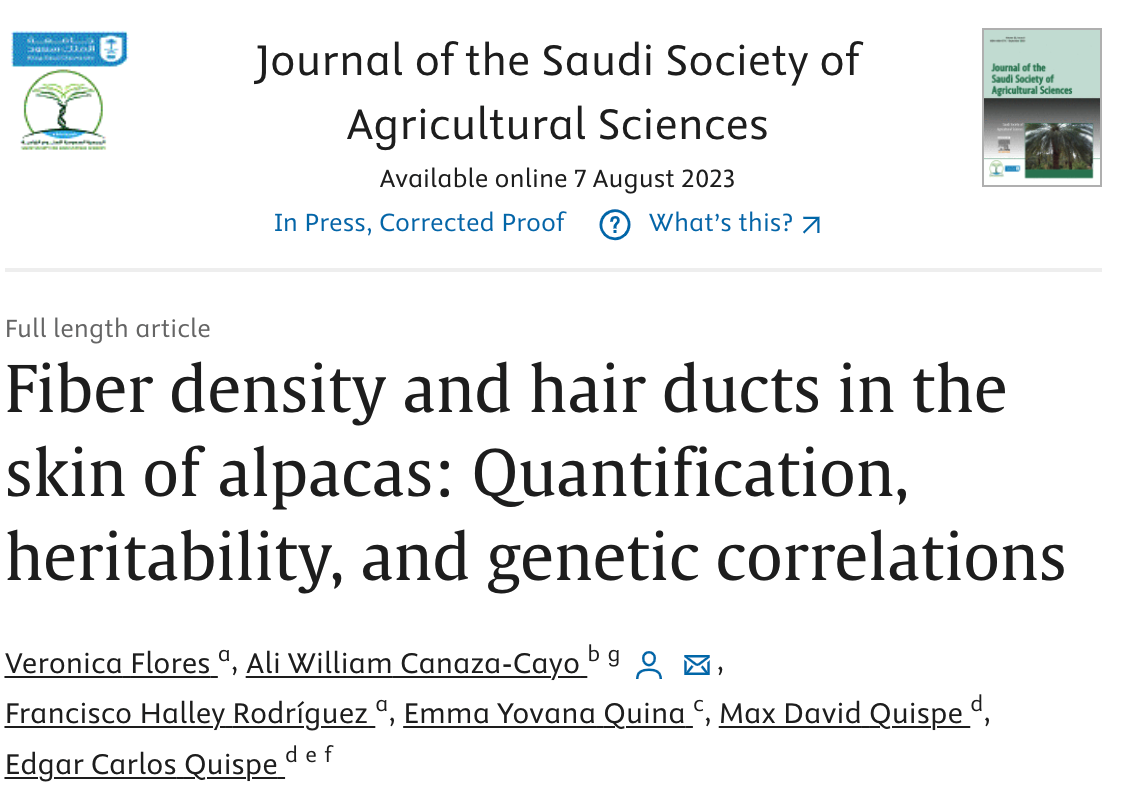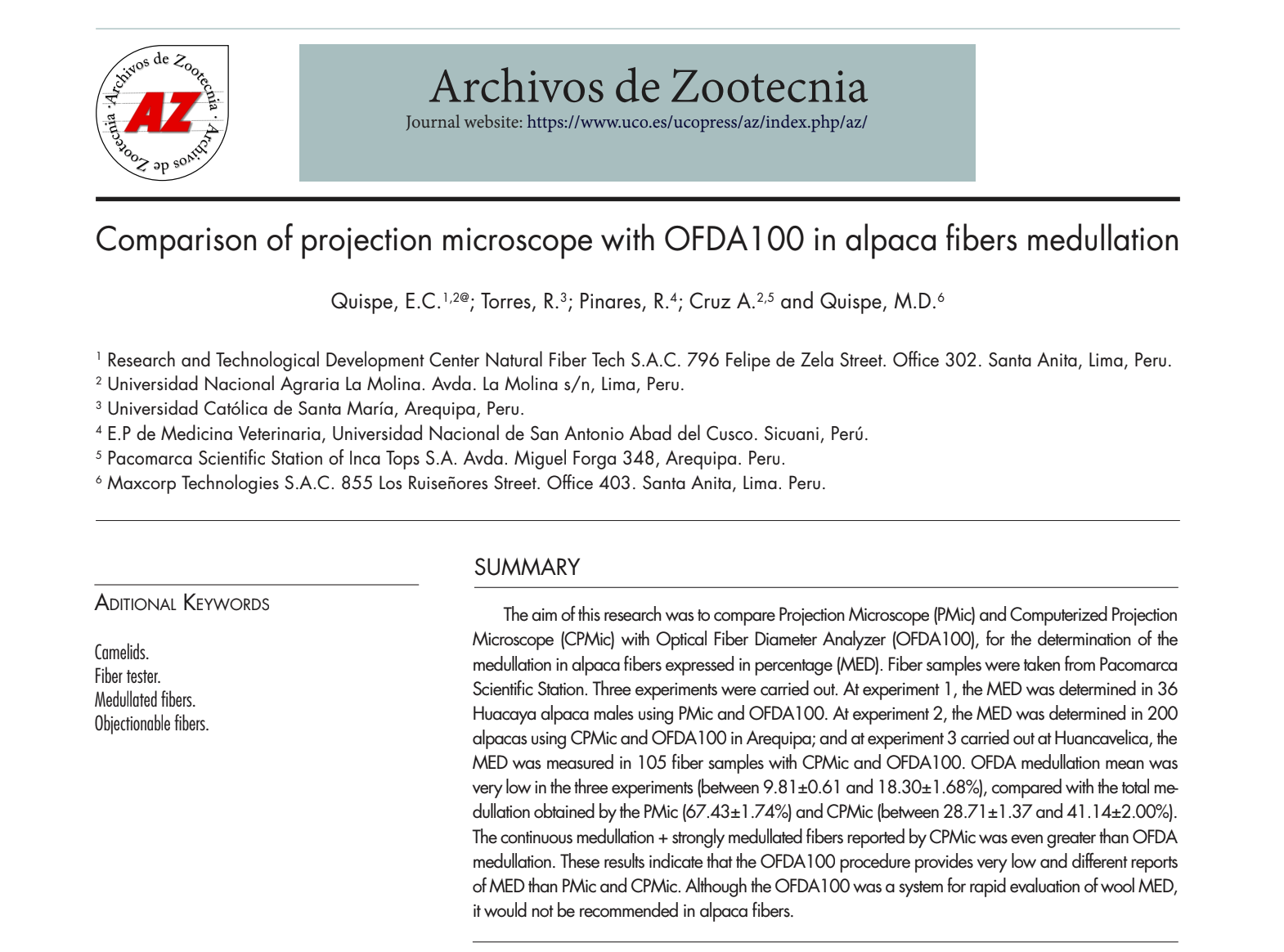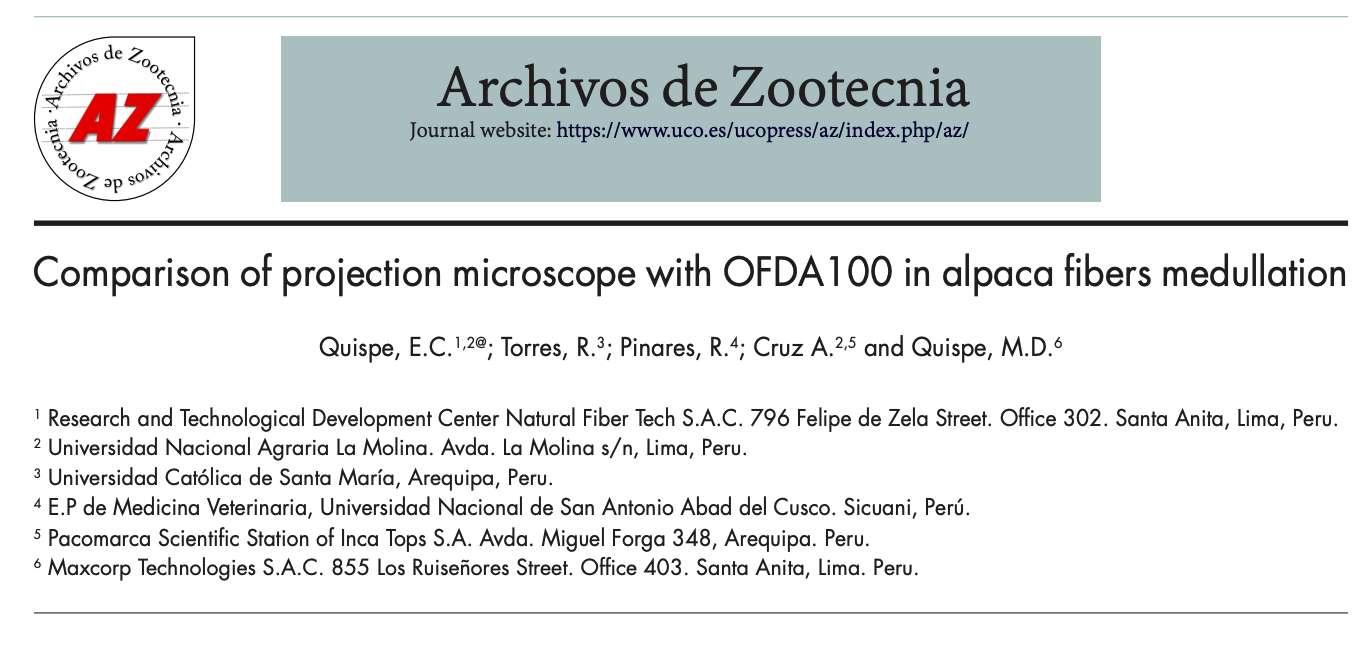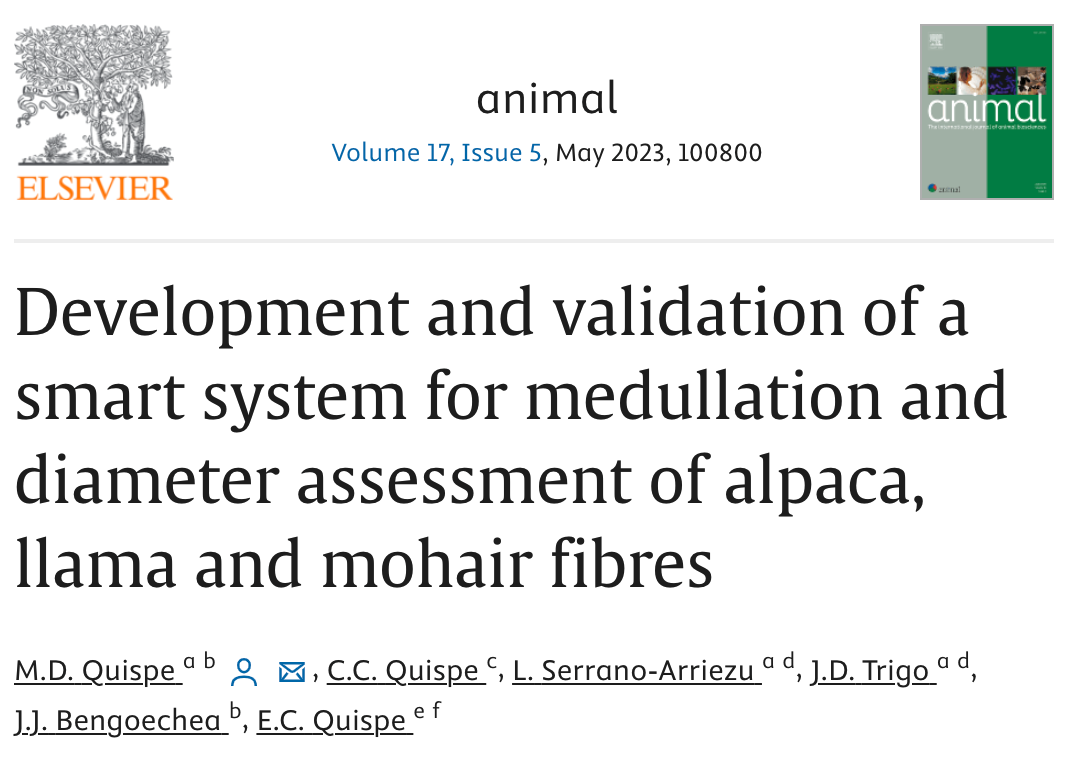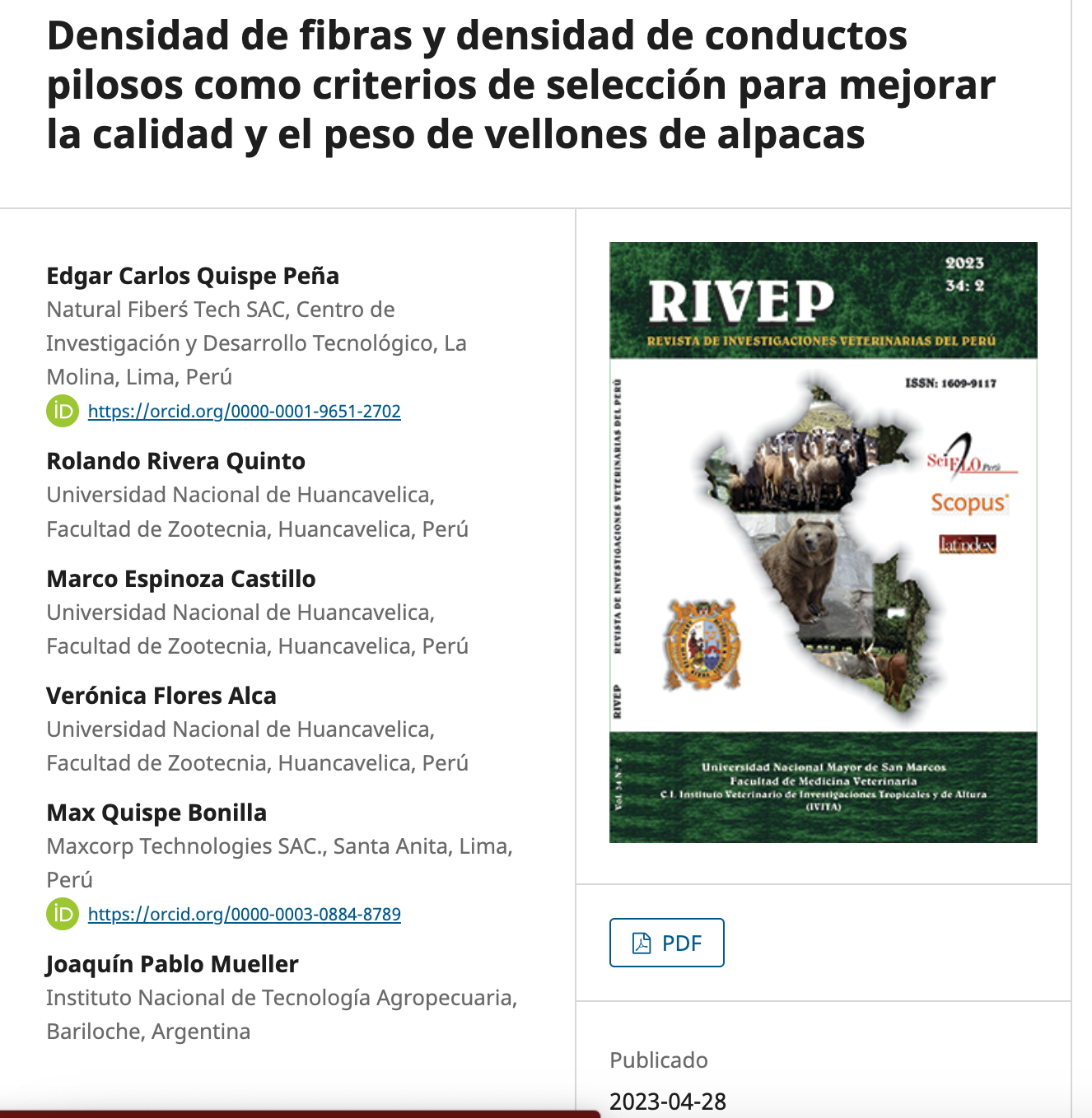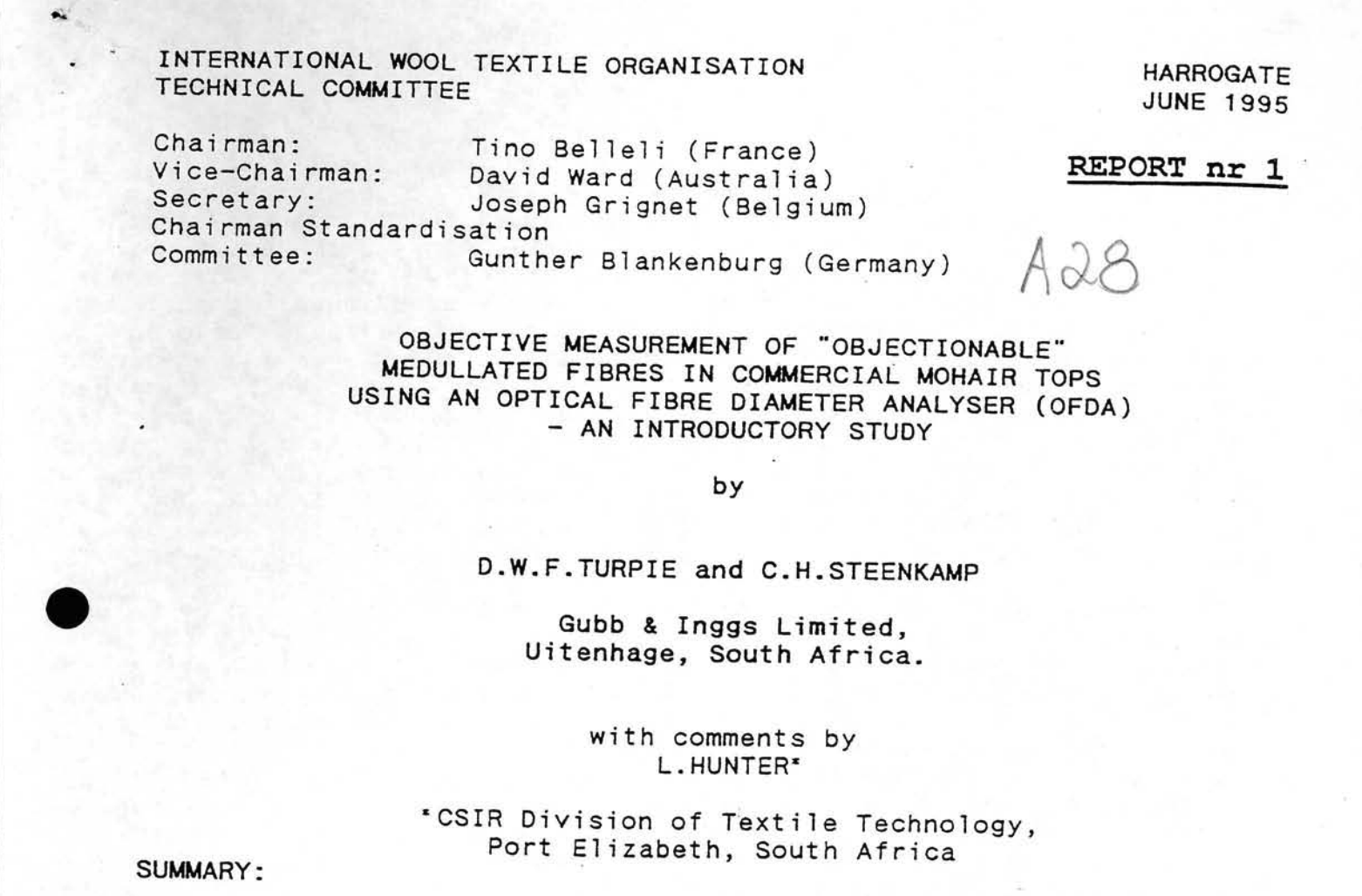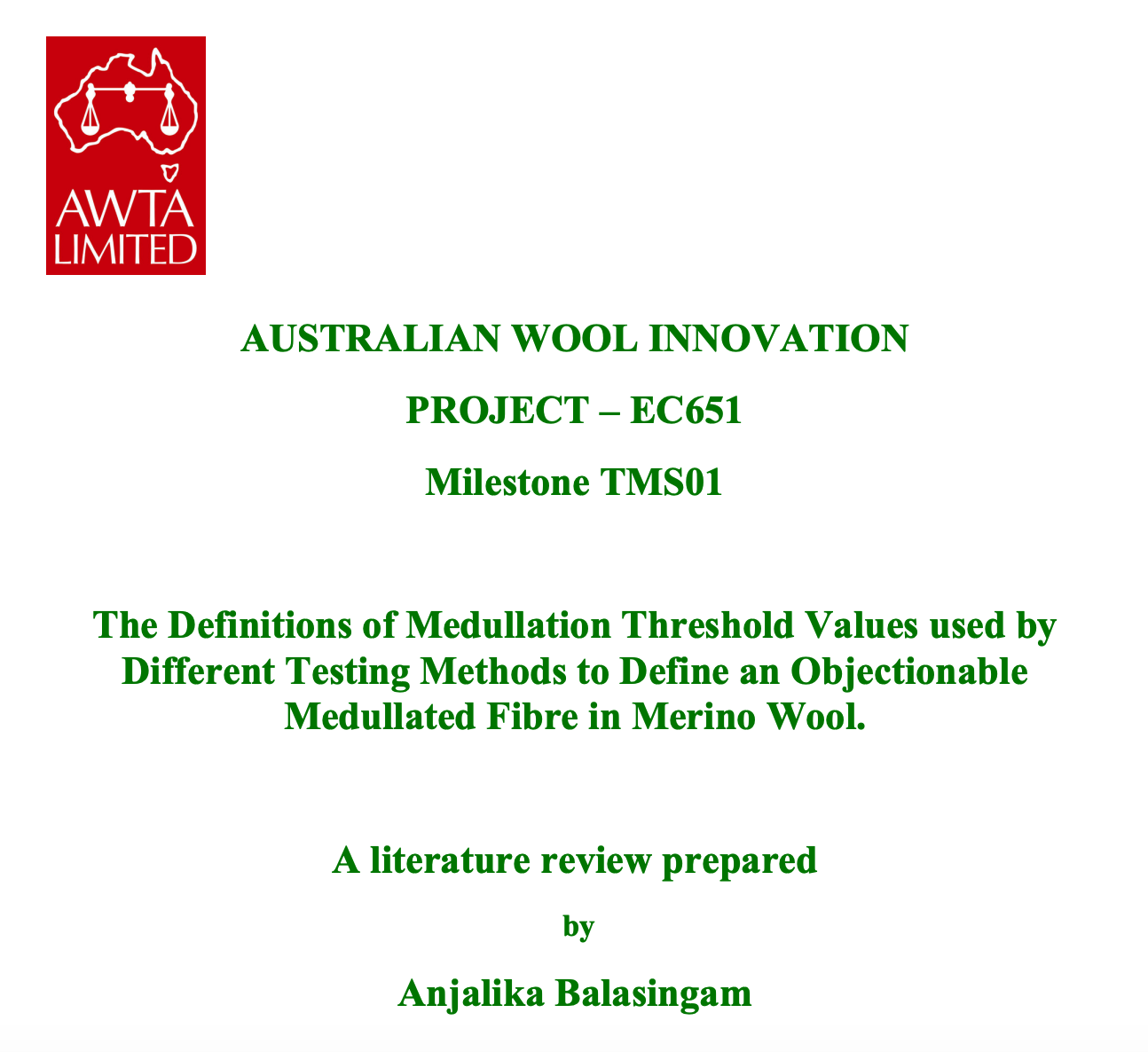Classification of South American Camelid and goat fiber samples based on fourier transform infrared spectroscopy and machine learning
ABSTRACT Some animal fibers are considerably cheaper than others. Hence the existence of counterfeit products, which are detrimental to legitimate producers and consumers alike. Fourier-Transform Infrared (FTIR) spectroscopy can extract a characteristic waveform from fibers that can be later used for classification. However, visually inspecting such waveforms is imprecise. Previous research has complemented FTIR with […]
Fiber density and hair ducts in the skin of alpacas: Quantification, heritability, and genetic correlations
ABSTRACT Alpaca fibers are used to create luxury garments, and simultaneous selection for optimizing fiber density and the density of hair ducts in the skin of alpacas could result in a more profitable product for breeders. The objective of this study was i) to quantify fiber density (FibDen), density of hair ducts (DenDuc), and the […]
Fiber density and hair ducts in the skin of alpacas: Quantification,heritability, and genetic correlations
Comparison of projection microscope with OFDA100 in alpaca fibers medullation
RESUMEN El objetivo del presente trabajo fue comparar el microscopio de proyección (MicProy) y el microscopio de proyección computarizado (MicProyCom) con el analizador óptico de diámetro de fibra, denominado OFDA100, en torno a la determinación de la medulación de fibras de alpacas, expresado en porcentaje (MED). Las muestras de fibras fueron tomadas de la Estación […]
Comparison of projection microscope with OFDA100 in alpaca fibers medullation
SUMMARY The aim of this research was to compare Projection Microscope (PMic) and Computerized Projection Microscope (CPMic) with Optical Fiber Diameter Analyzer (OFDA100), for the determination of the medullation in alpaca fibers expressed in percentage (MED). Fiber samples were taken from Pacomarca Scientific Station. Three experiments were carried out. At experiment 1, the MED was […]
Development and validation of a smart system for medullation and diameter assessment of alpaca, llama and mohair fibres
ABSTRACT Medullated fibres, due to their higher resistance to bending and pressure, constitute a problem for the textile industry. Thus, having practical instruments to identify them is essential. Therefore, the aim of this research was to develop and validate a novel, swift, automatic system (referred to as S-Fiber Med) for medullation and diameter assessment of […]
Densidad de fibras y densidad de conductos pilosos como criterios de selección para mejorar la calidad y el peso de vellones de alpacas
RESUMEN Mejoras en el peso de vellón de sucio (PVe) y diámetro medio de la fibra (DMF) favorece los ingresos de los productores de alpacas; sin embargo, estas variables están relacionadas directamente, complicando el mejoramiento simultáneo de ambas características. Por tanto, se requiere buscar nuevos criterios de selección para la mejora simultánea de ambas características. […]
OBJECTIVE MEASUREMENT OF «OBJECTIONABLE» MEDULLATED FIBRES IN COMMERCIAL MOHAIR TOPS SING AN OPTICAL FIBRE DIAMETER ANALYSER (OFDA) – AN INTRODUCTORY STUDY
by D.W.F. TURPIE and C.H. STEENKAMP Gubb & Inggs Limited, Uitenhage, South Africa. with comments by L. HUNTER* *CSIR Division of Textile Technology. Port Elizabeth, South Africa SUMMARY: In a quest to find an objetive measure of those medullated fibres which «stand out» as being «optically different» and «objectionable» commercial mohair tops (including good quality […]
The Definitions of Medullation Threshold Values used by Different Testing Methods to Define an Objectionable Medullated Fibre in Merino Wool.
A review by Anjalika Balasingam Conclusion There is no objective definition of a contaminant medullated wool fibre that can be substantiated by published trials. The American Society of Testing Materials (ASTM) has published a definition in ASTM-D 2968-89 that uses the ratio of medulla to fibre diameter to define contaminant medullation. But we have been […]
Artificial intelligence as a potential tool for micro‐histological analysis of herbivore diets
ABSTRACT Diferent non-invasive techniques have been used to determine herbivore diet composition from fecal samples, including micro-histological analysis of epidermal fragments. This method can provide reliable semi-quantitative data through the identifcation of plant cell structures visualized under an optical microscope. However, this method is highly time consuming and it requires signifcant expertise in microscopic identifcation. […]


